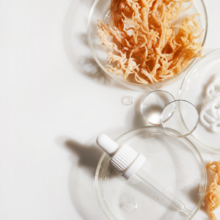Signs of Iron Deficiency & Surprising Ways You’re Inhibiting Iron Absorption
- Published: Wednesday, April 1st 2015
- in Nutrition
 If you’re tired of feeling tired, you may need to iron up. According to the Centers for Disease Control and Prevention, low iron is the most common nutritional deficiency in the United States, with almost 10 percent of women being iron deficient. Here’s why this can create fatigue:
If you’re tired of feeling tired, you may need to iron up. According to the Centers for Disease Control and Prevention, low iron is the most common nutritional deficiency in the United States, with almost 10 percent of women being iron deficient. Here’s why this can create fatigue:
- Iron is an essential mineral that is a necessary part of hemoglobin.
- Hemoglobin is a component of red blood cells (RBCs).
- These RBCs transport oxygen from our lungs throughout the rest of the body.
- Low levels of oxygen at the cellular level can make you feel fatigued.
By the way, in addition making you feel like a slug, low iron levels can also affect your remaining brain function and even impair the immune system. For you, that means you may also get sick much easier, feel dizzy, or have trouble thinking. On a more cosmetic level, iron is also needed to maintain healthy skin, hair, and nails.
How To Boost Iron Absorption
The most common form of iron is called heme iron and is found in meats and seafood. This form is absorbed 2 to 3 times more efficiently than iron found in plant sources such as beans, spinach, etc., (this form is called non-heme iron). So if you are a vegetarian or vegan your body won’t absorb as much from the food.
That said, this doesn’t mean you’re doomed to low iron-induced lethargic fuzzy thinking perseveration about your bad hair and nails. There are simple and delicious ways to boost iron absorption, even from plant food sources. The best way to increase iron absorption is to make sure a vitamin C source is also present at the meal. Some simple examples of how to do this include:
- Beans with salsa or tomatoes
- Hummus made with lemon juice and served with slices of bell peppers.
- Wilted spinach with a drizzle of fresh squeezed orange juice over the top.
Another simple solution to up your dietary iron is to cook with an iron skillet. When food is cooked in iron skillets – particularly in a slightly acidic environment such as with a tomato sauce – some iron goes out into the food. This can increase the iron available to you by 2-3 times!
Ironic Foods that Inhibit Iron Absorption
The catechins found in tea, coffee, and cocoa can increase basil metabolic rate and daily energy levels. However, the tannins can also block your body’s ability to absorb iron, which can lead to lower energy levels. In fact, studies have shown that tannins from tea can reduce absorbed iron by as much as 87 percent! Another showed that tea can cause iron absorption to drop by 60 percent and coffee can cause a 50 percent decrease.
The good news is that you don’t have to give up your coffee and tea. You have at least two solutions to this little “irony”. You could simply wait one hour after a meal containing vegetarian iron sources before you enjoy your coffee or tea. On the other hand, you may not even have to do that much.
This study showed that adding vitamin C to your meal (to increase iron absorption) overcame the inhibition caused by even very large amounts of tea. So break out the Rooibus and focus on the positive impact that vitamin C-rich foods have. By adding those vitamin C foods, the negative impact of tea tannins turns out to not be such a problem after all.
Here are some examples of foods where you can get your heme iron, non-heme iron, and vitamin C!




